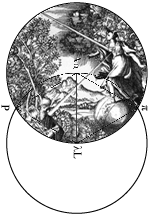 |
production. Journal of Architectural Education, Ed. Ryan E Smith, Vol. 71 No. 1. London: Taylor and Francis (March 2017).Post-industrial architectural production benefits from a broader perspective of what it means to build. The efficiency and optimization promised by modernity, however, has had both positive and negative impacts. We can now question if the impact of buildings and the role of architects are better for the advances in technological production. What are, for example, the unintended consequences of BIM-modeled over-sized structures, triple layered gas filled glass facades, complicated forced air handling, cellular restricted prefabrication, and self-negating renewable energy? When architects design buildings, we simultaneously build systemic relations among modes of production – techniques and technologies – and cultural, economic, ecological and political forces. Privileging the production of objects over its attachments or its engenderment, the practice of architecture has long isolated inherent technological interests from broader forces that presuppose building. Technological production, consciously or unknowingly, also produces relationships between socio-technical performances. Lewis Mumford termed this interplay of social milieu and technological innovation as “technics.” Understanding architectural production in this way implies a dialogue between building technique and technologies (i.e., digital practices, integrated systems, collaborative delivery, structure and material advances, fabrication methods, construction modalities, workforce and skills development, ecological and environmental performances) and social parameters (i.e., economy, labor, policy, equity, and the environment). In the context of twenty-first century mega-problems: climate change, economic crises, and social transformation, how might architects recognize the enmeshed relations of architectural production and the social forces of production? Is it possible to reflect on the production of architecture beyond causality of technological determinism (society follows technology); social determinism (technique follows society); and/or historical reductionism that often underscores scholarship and educational paradigms? How might systems theory, systems thinking, and Science Technology Studies (STS), applied to the question of production, provide more agency to the architect? The Journal of Architectural Education Issue 71:1 seeks Scholarship of Design, Design as Scholarship, and Micro-Narratives that investigate architectural production from the perspective of its contingencies and influences on broader networks for which architecture has impact: social, economic, political and environmental systems. This issue seeks to reflect upon production technique not as individual materials or components, but as linkages between artifact and performance, as well as their engenderment and societal effects. |
